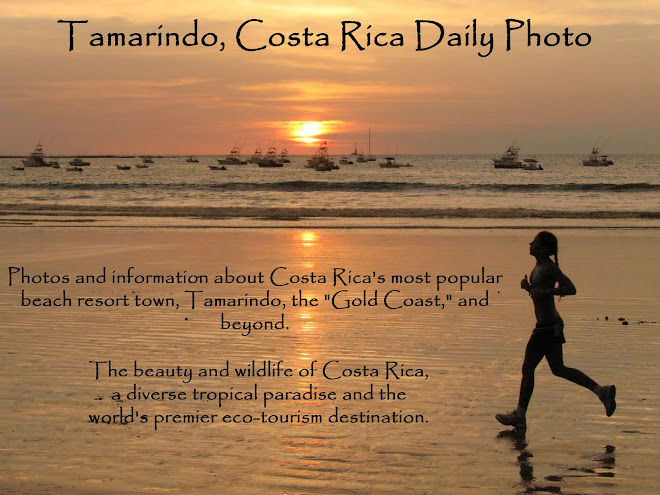+0443+P1000585.jpg) This is a black river turtle, or tortuga negra del rio (scientific name rhinoclemmys funerea), sometimes also called a black wood turtle. They are native to the wetlands on the Caribbean side of Costa Rica, and in fact I took this photo from a small boat in Totuguero National Park on the Caribbean in the northeast corner of Costa Rica.
This is a black river turtle, or tortuga negra del rio (scientific name rhinoclemmys funerea), sometimes also called a black wood turtle. They are native to the wetlands on the Caribbean side of Costa Rica, and in fact I took this photo from a small boat in Totuguero National Park on the Caribbean in the northeast corner of Costa Rica. These turtles are only about 32 cm. (12 in.) in length. They like to sun themselves during the day, often on logs as this turtle is doing. They forage on land at night for food.
Tropical turtles differ from their northern relatives in their breeding habits. Turtles who live in cold weather may have only one breeding cycle per year, leaving up to 100 small eggs in a single burrow. Freshwater tropical turtles in Costa Rica have adapted to the warm weather year round by breeding multiple times throughout the year and leaving only 3 or 4 larger eggs at a time.
The tropical breeding habits offer several advantages. If a predator discovers the nest, a tropical turtle will lose only a few offspring, whereas a northern turtle has placed all of its eggs in the same burrow and an entire year's reproductive cycle could be lost. Also, by laying a smaller number of larger eggs, the hatchling tropical turtles have a better chance of survival.
Costa Rica is best known for its sea turtles, not its freshwater turtles such as this one. The main nesting place for the endangered leatherback tutles is Playa Grande, which is right next to Tamarindo. We have a nice view of Playa Grande from our condo at the Diria Resort in Tamarindo, and night time turtle nesting observation visits are possible, with guides from the Las Baulas National Park. There are also olive ridley sea turtles who nest at Playa Langosta near our Langosta beach condo. I do not want to bother them by trying to photograph them at night and flashing lights in their eyes, as lights are detrimental to their nesting.

An excellent post with lots of useful information. I learned a lot by coming here today. Thanks.
ReplyDeleteThank you for this very interesting information you gave us. Also the photo is great: it looks like if the turtle is sunbathing.
ReplyDeleteI've just seen the word 'tortuguero' on the labels and couldn't resist! Both shots (turtle and cayman) are wonderful! I miss this park...
ReplyDelete